‘We are not fast fashion’: Uniqlo celebrates 40 years by wanting to take over the world
Sign up now: Get ST's newsletters delivered to your inbox
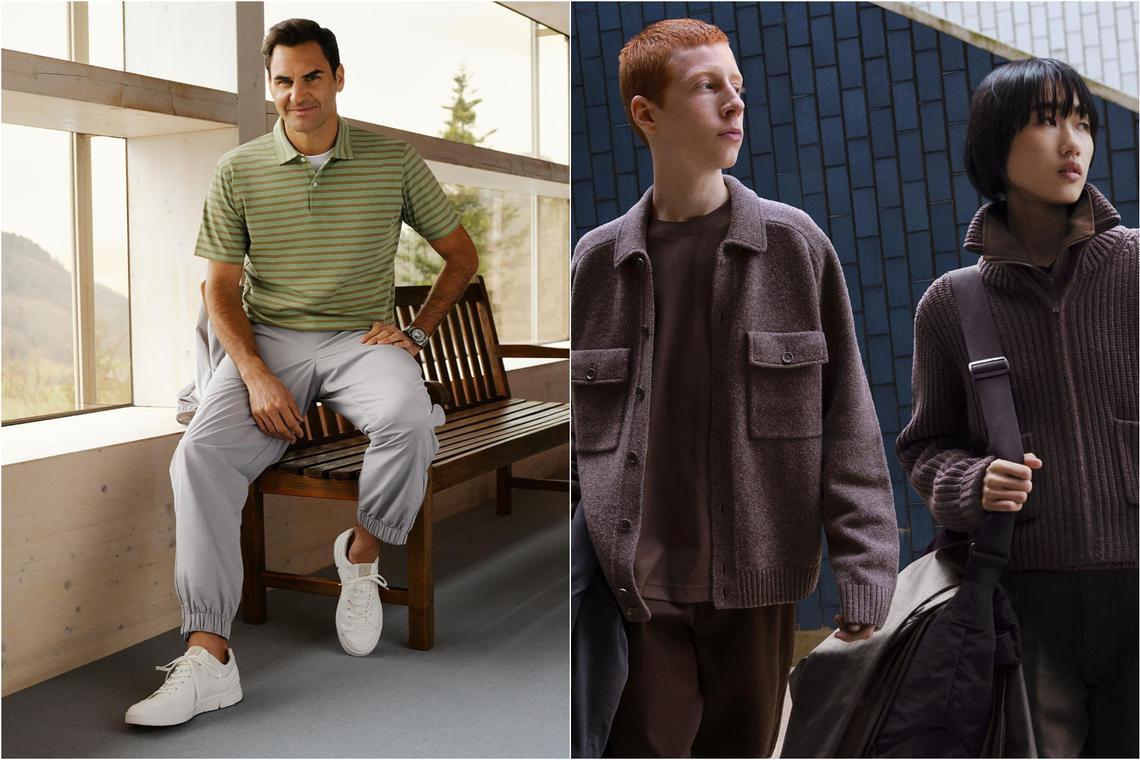
Uniqlo's Roger Federer Collection by JW Anderson (left) and the U 2024 fall-winter collection designed by Christophe Lemaire and Sarah-Linh Tran.
PHOTOS: UNIQLO
Follow topic:
PARIS – In a move signalling it was betting big on Europe, Uniqlo chose Paris Fashion Week as a backdrop for its 40th anniversary celebrations.
In early October, the Japanese retailer celebrated 40 years with an exhibition exploring its LifeWear concept at Pavillon Vendome in the centre of Paris.
Titled The Art And Science Of LifeWear: What Makes Life Better?, the exhibition showcased current fall-winter collections in a setting inspired by a classic Parisian apartment. It featured live models in Uniqlo threads and was open to the public from Oct 1 to 5.
The brand kicked off celebrations a day early with a private reception on Sept 30.
In attendance at the intimate party were Uniqlo global brand ambassador and retired Swiss tennis star Roger Federer, newly minted Uniqlo creative director Clare Waight Keller, and Irish designer and frequent collaborator Jonathan Anderson. Editor-in-chief of Vogue Anna Wintour also graced the event.
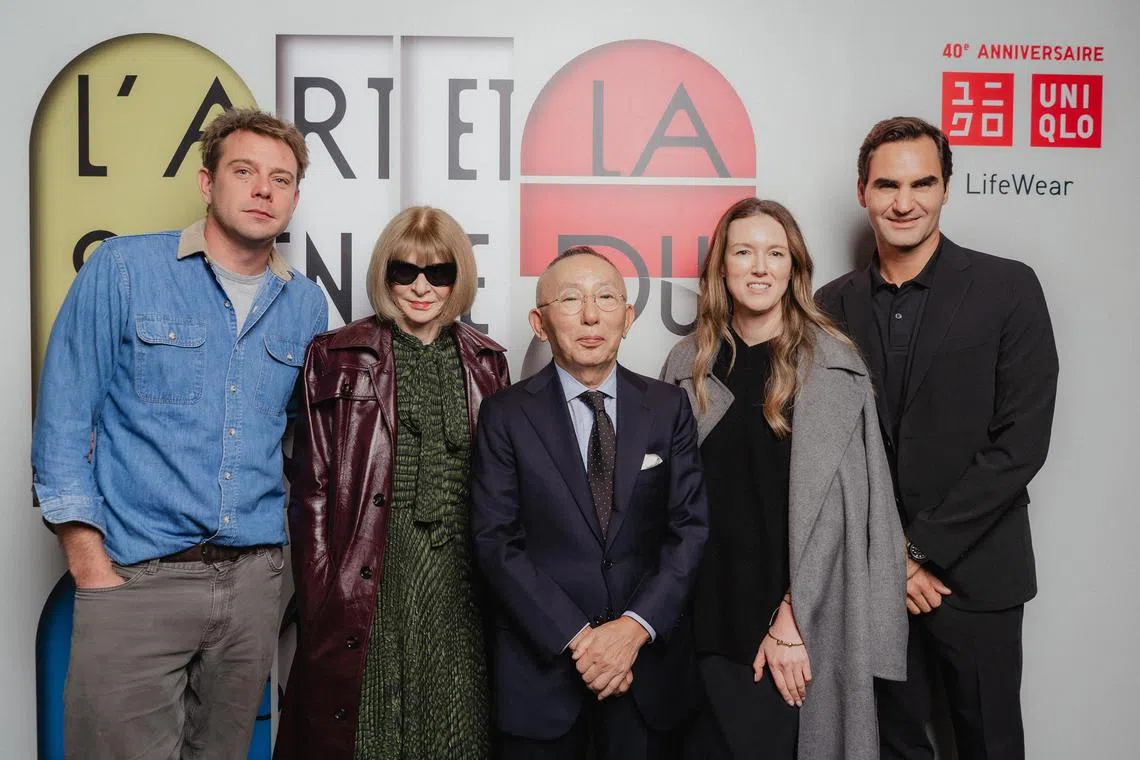
(From left) Irish designer Jonathan Anderson, Vogue editor-in-chief Anna Wintour, Uniqlo’s founder Tadashi Yanai, creative director Clare Waight Keller and global brand ambassador Roger Federer.
PHOTO: UNIQLO
Down in the basement of Pavillon Vendome, the exhibition showcased the technology from material manufacturer and long-time partner Toray that goes into making iconic Uniqlo products. Through immersive touchpoints, visitors could learn more about the Japanese company – which also manufactures for the aerospace and pharmaceutical industries – and its innovations for Uniqlo.
Among them is nanodesign yarn, a molecular-level technology that enables Uniqlo to modify individual fibre strands in the yarn’s structure to give it different properties, such as water-repellance.
Toray’s greatest hits include Heattech, Airism and its newest innovation, Pufftech. Designed as a lightweight, cost-effective alternative to down, the tech uses high-performance padding made with hollow yarn that traps air for warmth – which can also be deftly shaped into more stylish patterns such as diamond quilting.
Accompanying the exhibition was a new global marketing campaign starring Federer, Waight Keller and Anderson, in which they answered the question, “What makes life better?”
Walking the talk, the retailer also pledged to donate, from this winter, one million Heattech items to refugees, children and disaster victims in markets where Uniqlo operates.
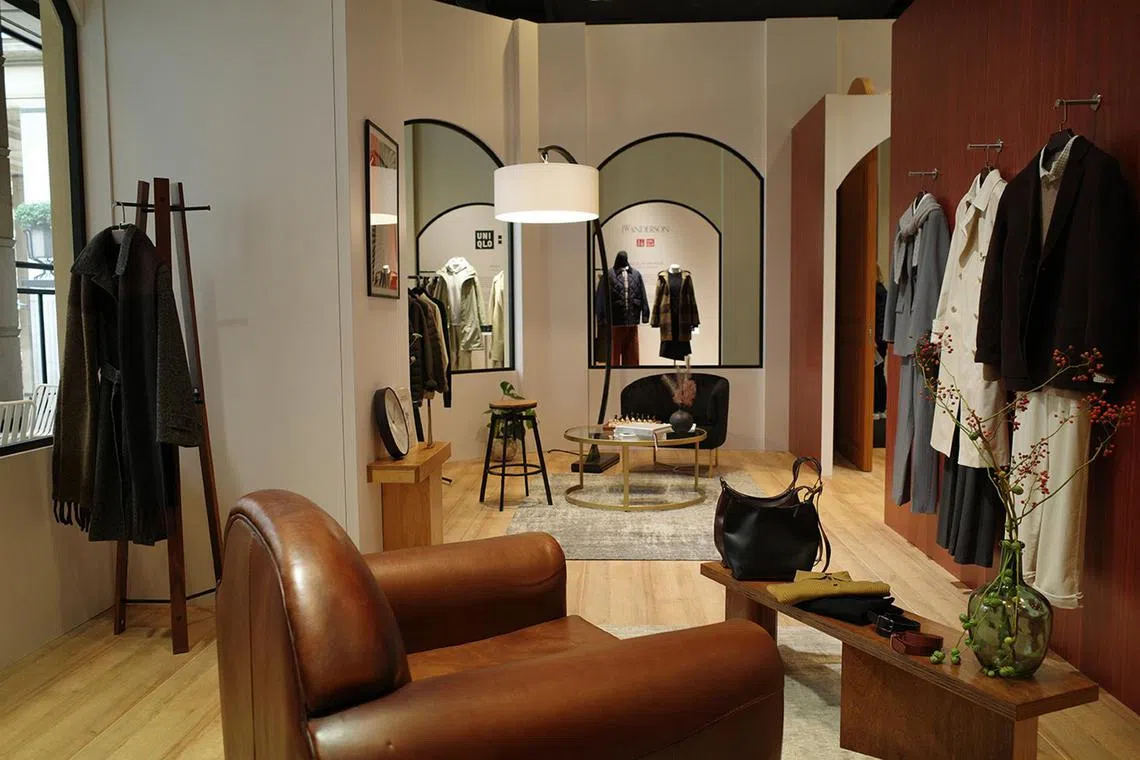
The Art And Science Of LifeWear Paris 2024 exhibition.
PHOTO: UNIQLO
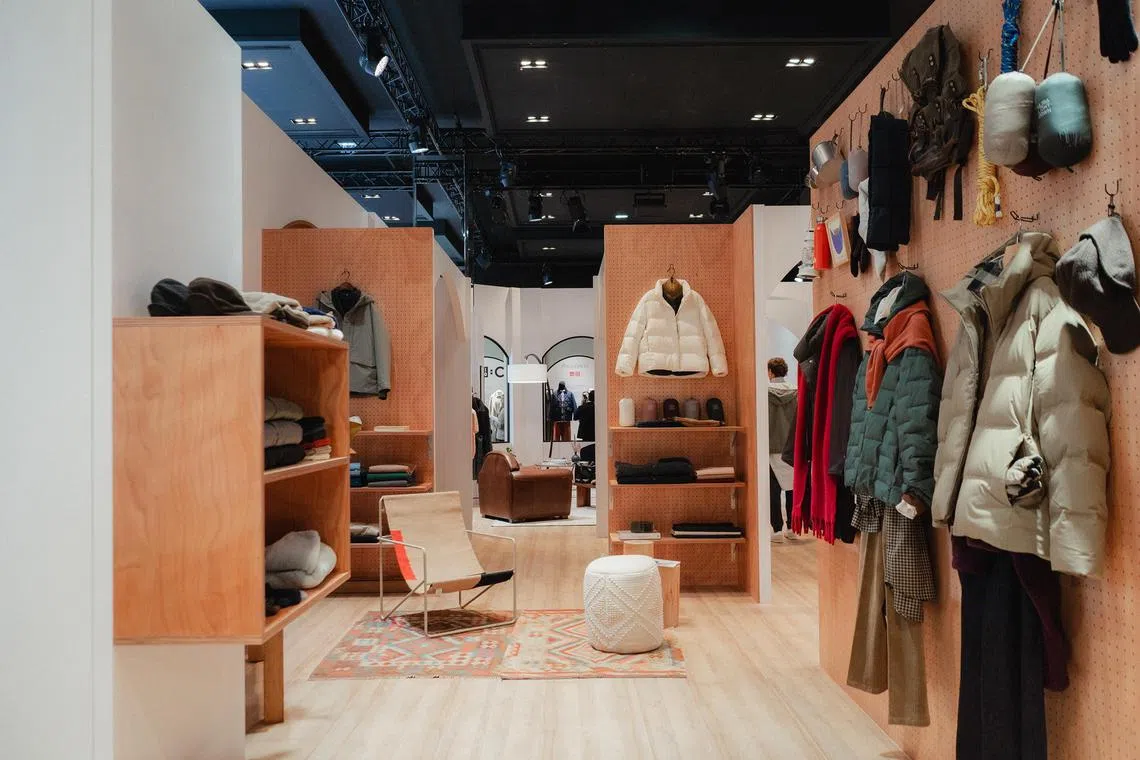
The Art And Science Of LifeWear Paris 2024 exhibition.
PHOTO: UNIQLO
It has been a monumental year for Uniqlo. The company currently operates more than 2,500 stores worldwide and posted sales of 2.77 trillion yen (S$24.3 billion) in 2023.
Since its stock listing in 1994, parent company Fast Retailing’s sales and profits have increased nearly hundredfold.
With 30 stores across the island, Singapore is the market with the highest density of Uniqlo stores per capita outside Japan.
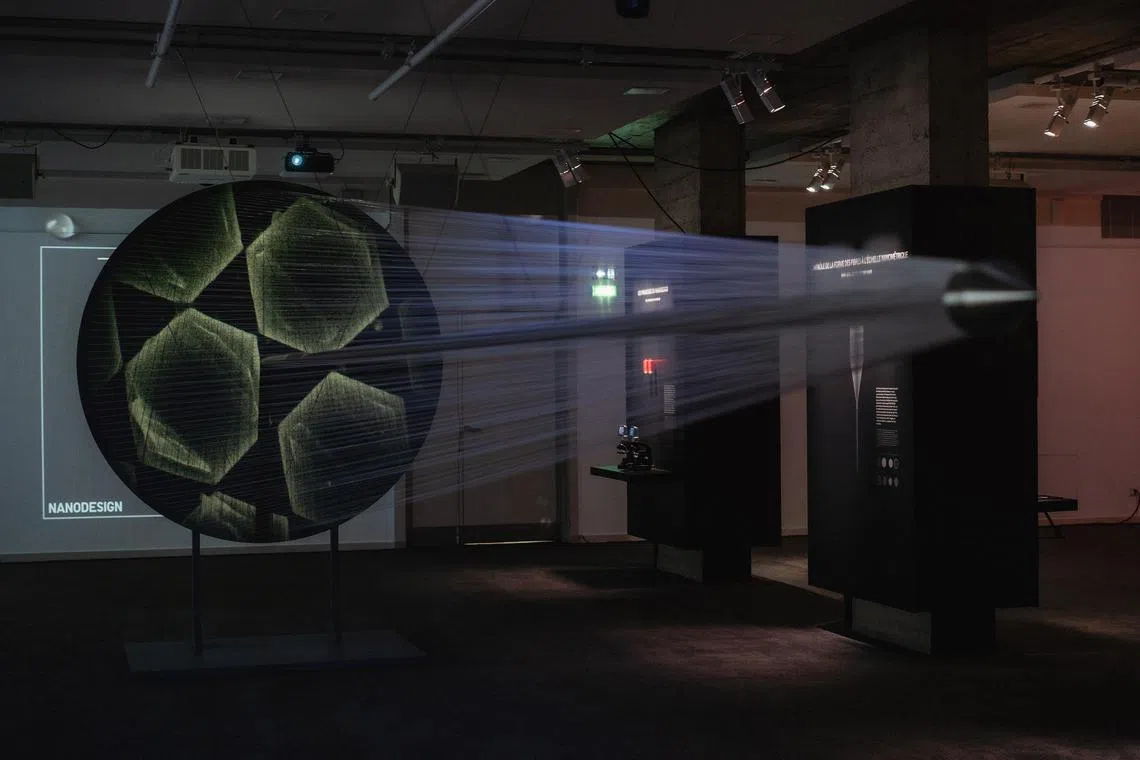
Nanodesign display developed by material partner Toray at the Art And Science Of LifeWear Paris 2024 exhibition.
PHOTO: UNIQLO
Yet for founder and head honcho Tadashi Yanai, it is still not enough. “Given Singapore’s potential, we should be doing more,” Mr Yanai, who flew to Paris for the launch, tells The Straits Times.
He is aware of Uniqlo’s reputation among Singaporeans as the “national uniform” for men, particularly its Airism cotton tee.
“Singapore is a top destination to people around the world. In South-east Asia, it is the single most advanced economy, therefore we should be posting more revenue. The potential is high, but we failed to build better stores and generate bigger revenue.”
Call him greedy but, for the 75-year-old – who in 2009 was named by Forbes Asia as the richest man in Japan – it is more about a constant pursuit of improvement.
The fast vision
Born in 1949 to tailors in the Yamaguchi prefecture, Mr Yanai took over their business in 1972, a small chain of tailoring shops selling suits to Japanese salarymen.
He saw greater potential in casualwear that could sell at greater speed and volume and, in 1984, opened a unisex casualwear store in Hiroshima, under the name Unique Clothing Warehouse.
One administrative typo later, Uniqlo was born. By 1994, Mr Yanai had grown the chain to more than 100 stores in Japan, under the parent company Fast Retailing.
His obsession with speed tracks. The story goes that he renamed the company Fast Retailing after being inspired by the speed and innovation in the fast food industry.
Famously vocal in his view that Japan has been lagging behind other countries as a market leader, Mr Yanai reiterates in this interview: “Japan was the first country in Asia to become an advanced nation, but Japan has been sleeping for 30 years.”
The Japanese possess positive values such as cleanliness and diligence, he notes, but also shortcomings. “They think but do not act or implement. But I believe that Japan will make a comeback.”
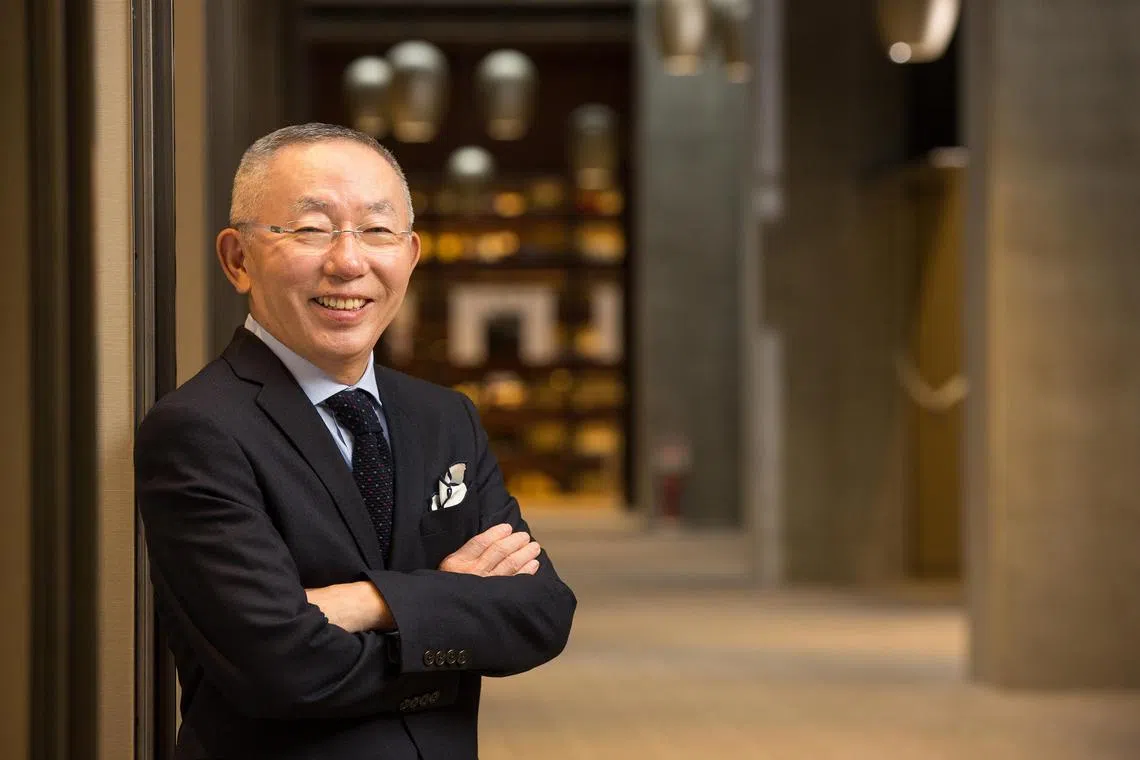
Mr Tadashi Yanai, chairman, president and chief executive of Fast Retailing, the parent company of Uniqlo.
PHOTO: UNIQLO
His company is here to lead the charge. With its reasonably priced yet stylish casual clothing, “we provided a new approach to clothing in the market”.
Gesturing to the group of international journalists present, he points out how one can no longer distinguish where someone is from just by their dressing. “Uniqlo clothing exceeds age, nationality and gender. It is about providing a toolbox to individuality, and making it accessible to all.”
And accessibility, he clarifies, does not mean mass market. “‘Made for all’ means making people with the highest standards happy. The current age is about mass production, but we need to focus on creating wardrobe longevity.”
Uniqlo’s competitors have grown to include all apparel retailers and even tech players jumping into apparel, such as Amazon and TikTok, he says. His ambitious 10-year plan involves tapping more cities to build new stores “as much as possible”.
Global expansion is a thorny issue for the ambitious entrepreneur, who in the past has spoken candidly about his failures expanding into markets in the West.
Uniqlo had tried to enter the British market in 2001 and the American one in 2005, opening 21 stores in Britain alone within two years. But the company grew too quickly without truly understanding its value proposition and was forced to close 16 of them in Britain by 2003.
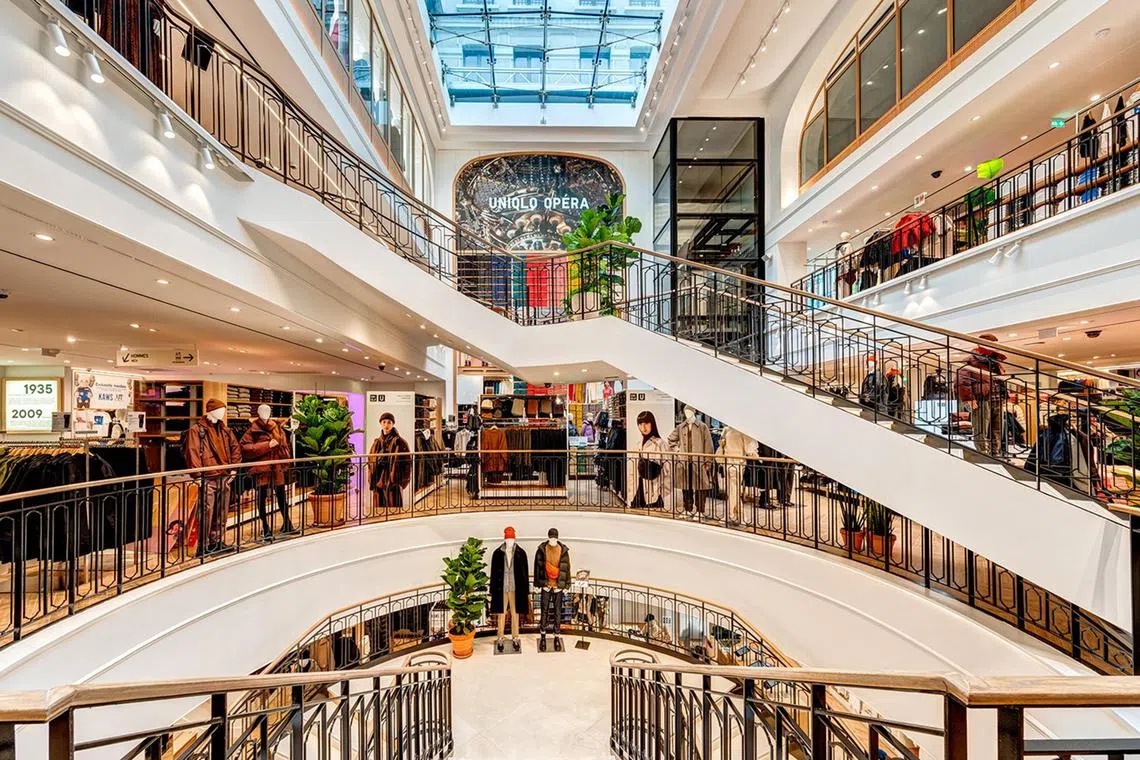
Uniqlo’s Paris Opera flagship store, which opened in 2009.
PHOTO: UNIQLO
Yet a successful second act ramping up expansion in the 2010s has brought about 28 stores in France and 79 in Europe in total.
What made his second attempt produce such spectacularly different results?
“The first time, we tried to accommodate the requirements of every country. But I realised all the countries should be given the opportunity to experience the real Uniqlo coming from Japan,” he says.
“We should not over-customise our product depending on the market. We should present ourselves the way we are. That’s what I learnt from the failure of the first time. That’s why we were successful the second time.”
The science behind the clothes
Another factor Mr Yanai believes makes Uniqlo successful is the company’s partnership with material manufacturer Toray, which he calls “the strongest in the world”.
Originating in 1999 and inked in 2006, the partnership is a win-win for both companies. Uniqlo taps Toray’s industry-leading technology, while Toray gets access to swathes of data otherwise unavailable to it.
According to Toray chief executive Mitsuo Ohya, Uniqlo consolidates the data equivalent of 3,000 consumer voices a day, which captures “future unspoken, unrealised needs”.
In Japan, the supply chain has traditionally been very long with too many middlemen, he says through an interpreter.
“That meant that the cost was much higher and the voices of the final customers didn’t reach us, the fibre-makers. With this partnership, we could shorten the supply chain greatly. This structure enabled us to provide the comfort of LifeWear.”
Since the smash hit development of Heattech in 2003, copycats have run rampant. Yet they always end up playing catch-up to Toray, which proposes about 100 prototypes of improved versions to Uniqlo each year.
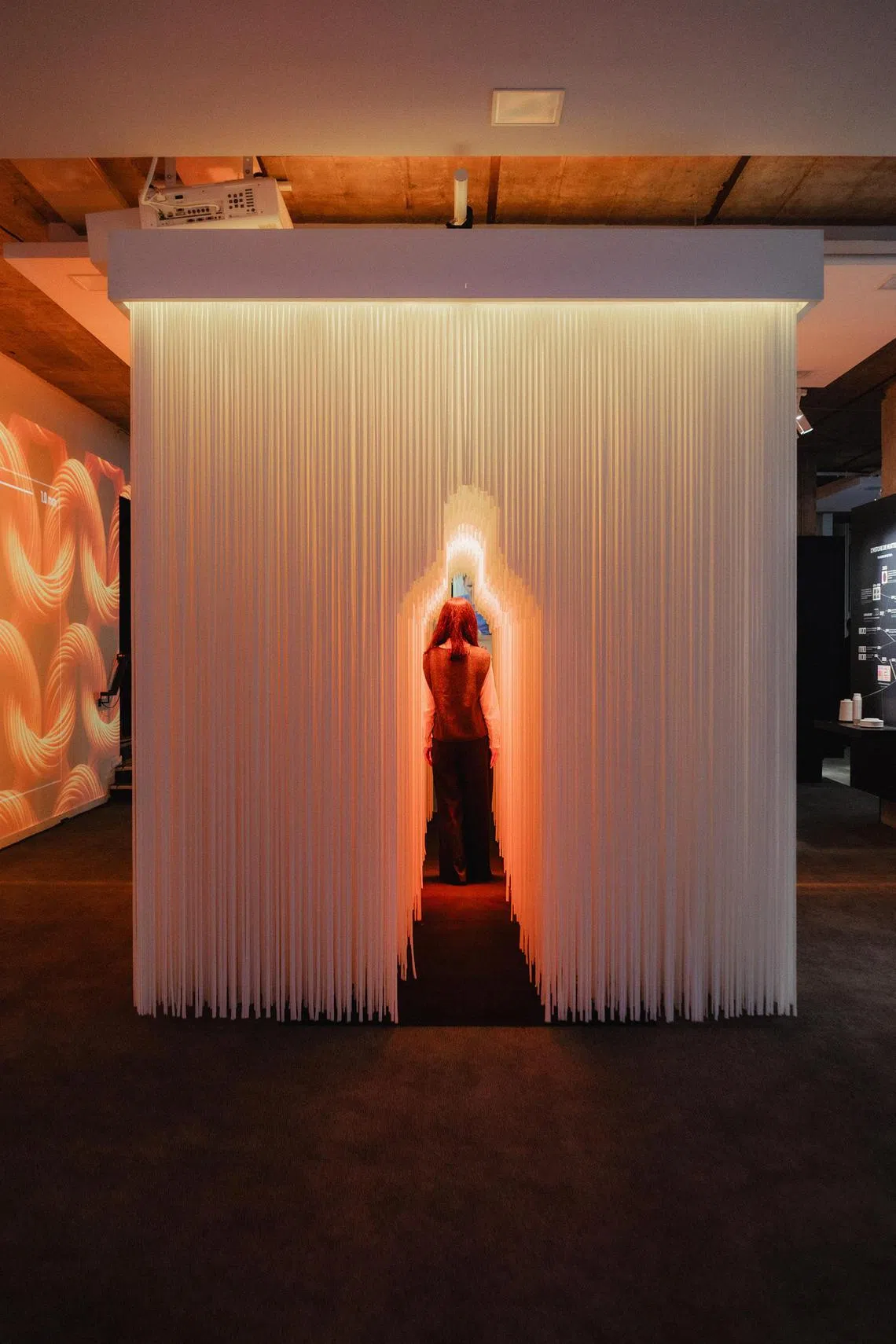
Heattech display at the Art And Science Of LifeWear Paris 2024 exhibition.
PHOTO: UNIQLO
“What is in Heattech changes every year,” says Mr Ohya, referencing Uniqlo’s newly introduced Heattech cashmere version.
“An important factor to a long-term successful brand is effort. The fact that we make such an effort to renew and enhance the product every single year is what makes the barrier to replicate so difficult.”
“Previously, Toray communicated to Uniqlo what kind of technologies we have, and made proposals for certain products they could make. But now, this process of R&D has been completely reversed. It has brought about a revolution in our mindset even in the hardware business – now we’re practising market-led development, listening to the voices of consumers,” he adds.
Uniqlo creates products based on customers’ demands – and complaints, says Mr Yuki Katsuta, Uniqlo’s head of global R&D.
Take, for instance, the common complaint that sweaters are itchy.
“But any wool, cashmere or lambswool, is itchy,” he points out. Intensive research led to the development of a super soft, non-itchy yarn the brand calls souffle yarn. “That’s one example of how we can make life better.”
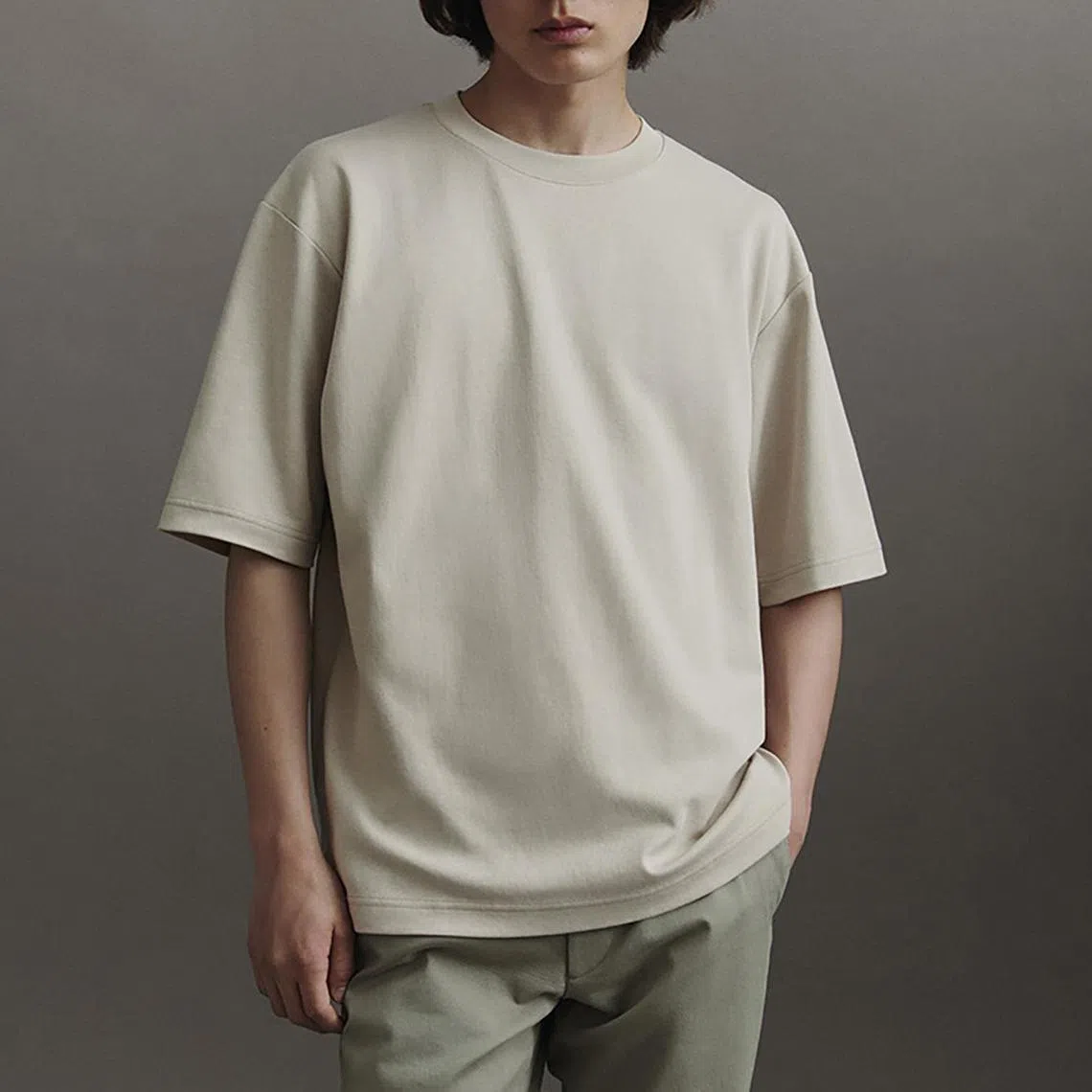
Uniqlo’s Airism Cotton Oversized Crew Neck T-Shirt.
PHOTO: UNIQLO
The beloved Airism tee was another innovation “born from customer voices”. Originating in 2013 as an innerwear solution to regulate body temperature during summers, it evolved into a standalone layer in 2020 – the viral Airism Cotton variation that now has its own following.
“It’s a completely new way of approaching clothing. One surface is the technology and one is natural fibres – we combined two completely different things. That again supports a customer’s life and comfort,” Mr Katsuta says.
The company’s ability to think, innovate and produce quickly might put it in the category of fast fashion – yet somehow it has managed to evade this negative label. What is its secret?
“Our process is not actually fast,” says Mr Katsuta. “Sometimes, it takes a year to develop new fabrics and do fittings.”
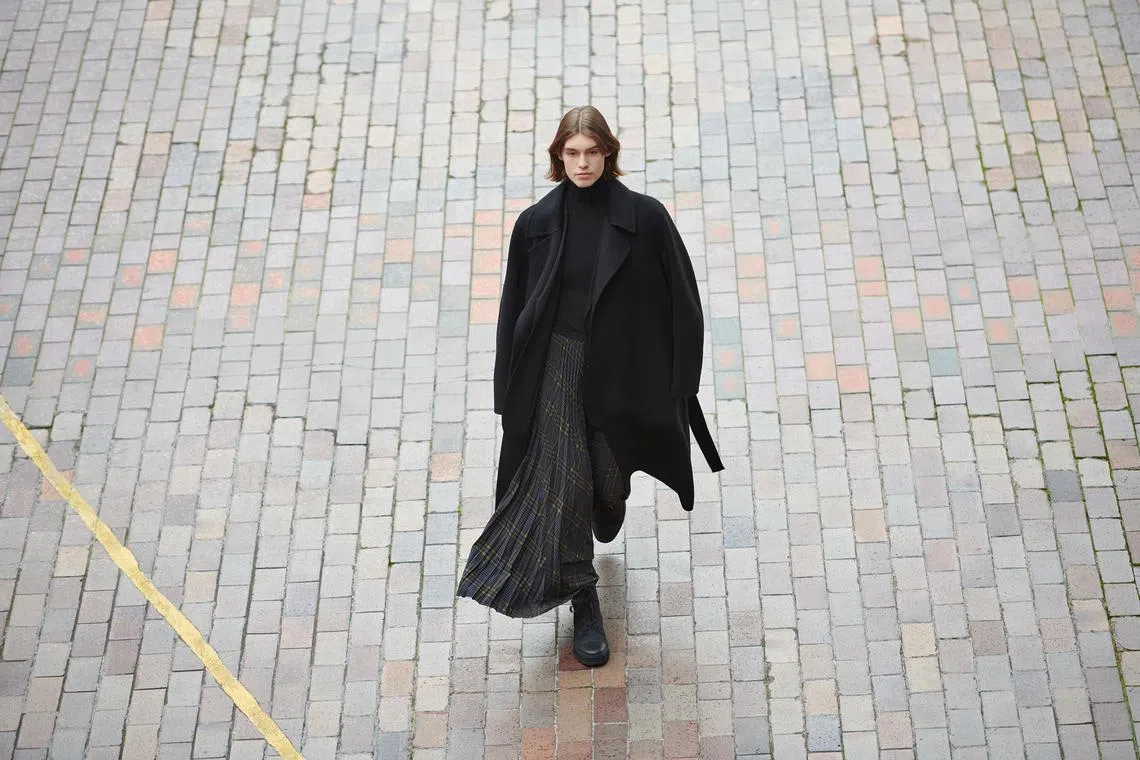
Uniqlo C 2024 fall-winter collection designed by Clare Waight Keller.
PHOTO: UNIQLO
When Waight Keller – who formerly led fashion houses Chloe and Givenchy – joined, she was surprised that Uniqlo did more fittings than luxury companies, he recalls.
“That tells us how much attention we pay to our products, even $10 T-shirts. Rather than seeking speed, we seek perfection.”
Having on board these designers with luxury experience is another strategy Uniqlo has tapped to elevate its quality of design and further its mission of creating wardrobe staples with longevity.
“Our value is about creating a new idea of essentials for customers,” he says. “We don’t want the designers to just create an inexpensive version of what they do.”
The Uniqlo DNA
Rounding up Mr Yanai’s dream team is creative titan John C. Jay, who was appointed to the newly created post of president of global creative for Fast Retailing in 2014.
A veteran in the advertising world with retail experience at American luxury department chain Bloomingdale’s, Mr Jay has on his resume influential campaigns for brands like American sportswear giant Nike. He has had a hand in the campaigns, store concepts and art collaborations that have come out of Uniqlo since.
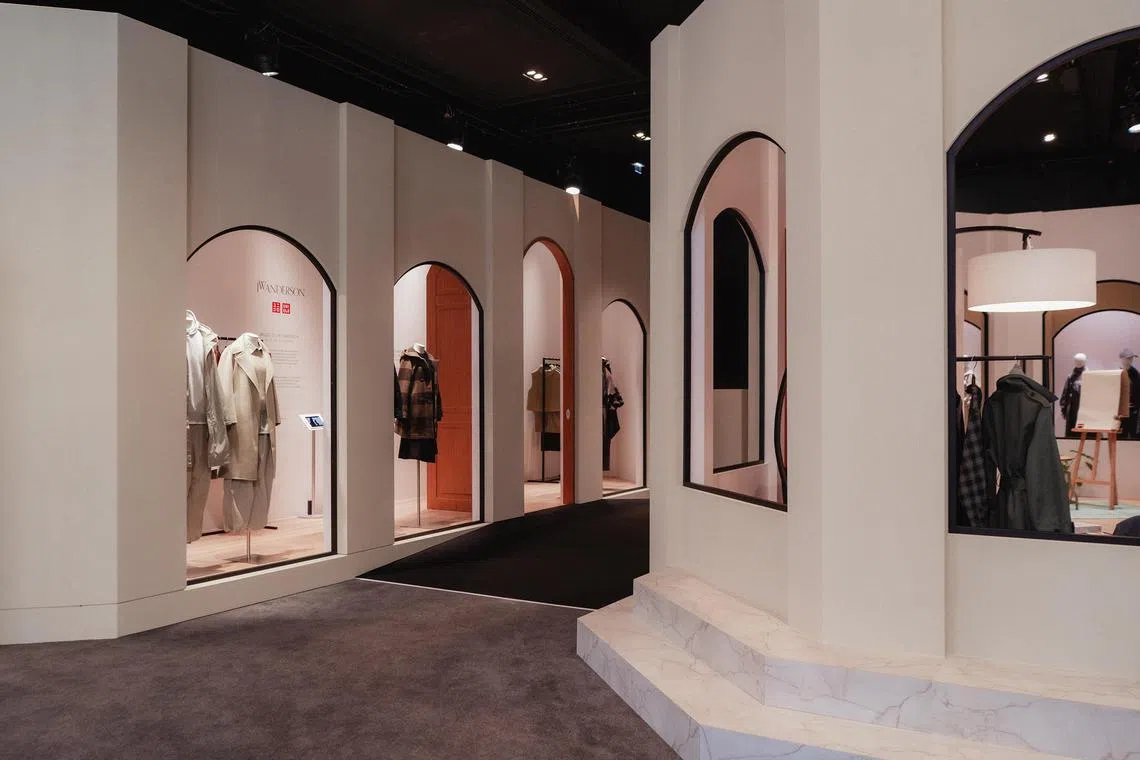
The Art And Science Of LifeWear Paris 2024 exhibition.
PHOTO: UNIQLO
Asked about his hand in Uniqlo’s surge in popularity in the last five years, Mr Jay says: “The growth wouldn’t happen if the product didn’t keep improving. All the marketing in the world doesn’t make it happen. We have a phrase ‘simple, made better’ – ‘simple’ is the entry point, not the end point. Just because it becomes classic or timeless doesn’t mean it can’t improve.”
And make no mistake – simple does not mean boring, he emphasises. “It’s about how you mix and wear it, that you can use it for self-expression. We don’t want just minimalists to be wearing our clothes.”
Where Uniqlo has been helped creatively, he notes, is with designers like Waight Keller, Anderson and Christophe Lemaire – the French designer co-helms the Uniqlo U collection – who bring new ideas and points-of-view of LifeWear to elevate the core product.
“Making it simpler sounds easy, but making it aspirational takes talent. The idea is not to make it basic, but essential in your life,” Mr Jay says.
His relationship with the group dates back to 1999, when he led a seminal Uniqlo fleece campaign. The retailer launched with 50 colours of fleece in Japan, at US$19 (S$25) apiece – something unheard of in 1999.
That very fleece campaign was an example of Uniqlo’s simple but bold approach, leveraging its strength in colour even then, he says.
Decades later, it did the same, launching 30 colours of cashmere in Milan.
Mr Jay believes Uniqlo’s strength lies in its obsession with quality – within its price point – and staying true to its DNA, over chasing trends or the market.
“That’s what makes you authentic. We don’t hire designers who are ‘hot’, with 20 million followers. That is not a quality world.”
His role leverages his own interest in culture and bridging those differences across markets.
“Everything is in the context of culture – when you say something is good or bad or hot or trendy. How we communicate quality has to be based on insight into the culture we’re delivering the message to,” he says. “For example, Rome is not Milan. Don’t think you can just pick up a successful opening of a flagship store in Milan and place that in Rome.”

Uniqlo U 2024 fall-winter collection.
PHOTO: UNIQLO
What has been challenging is rising above the noise in today’s social media-led world.
“Everyone is being fed what’s hot and new every minute. This onslaught of newness doesn’t always add up to quality,” he says.
“We can be aware of things and we choose and select. Because information alone is not insight. Without insight, there’s no creativity. And without creativity, there’s no innovation.”
Enter Uniqlo’s tie-ups with artists and museums, a pet project for Mr Jay. The brand’s many art projects span its UT line of T-shirts from emerging and established names, to collaborative collections with global arts institutions including the Louvre in Paris and Museum of Modern Art (Moma) in New York City.
That aim was to democratise art for all. For example, Uniqlo sponsors free admission for New York City residents to Moma on the first Friday evening of every month.
And the T-shirt – “the palette for young people” – is a gateway to the art world, says Mr Jay. “It’s so that more people can enjoy it and we take away some of the elitism around art.”
It is hard to sum up what Uniqlo is – but it is not fast fashion, he says emphatically.
“We don’t make disposable clothing. And when is clothing not disposable? When it has a certain quality, timelessness, that encourages you to keep that casual sweater for five to 10 years in your closet.”
He adds: “We are a Japanese-founded company, but we are changing contemporary casual apparel – a Western invention. There was no idea of clothes until the 1860s when the ports were open. There was no fashion history; no outerwear, businesswear or casualwear.
“Isn’t it ironic that a Japanese company is reinventing casualwear? That is a core strength.”


